INTERESTING IRON
Farmall C: Farmall’s Middle Child Finally Steals the Spotlight
Ryan Roossinck
May 08, 2025
Let’s talk Farmalls for a minute—specifically the Farmall C—because, honestly, I think it suffers from classic middle child syndrome. When folks reminisce about red tractors from the ’40s, a few stars always come up: the M was the muscle, the Cub was the cute one, and the H was the reliable little brother to the M. But the C? You rarely hear anyone get sentimental about the C… because it always lived in the shadow of its more popular siblings.
And that’s a shame, really, because the Farmall C was a solid, smartly-designed machine that played a key role for smaller row-crop farms and all-around utility work. It packed more power than the Super A and featured better ergonomics than the A and B it replaced. It may not have grabbed the spotlight, but it absolutely got the job done.
Now, before anyone gets too deep into psychoanalyzing this, no—I’m not working through childhood baggage via tractor metaphors. I’m the firstborn of two. I just think the C deserves a little more love.
Now, where were we…
Where’d the Farmall C come from, anyway?
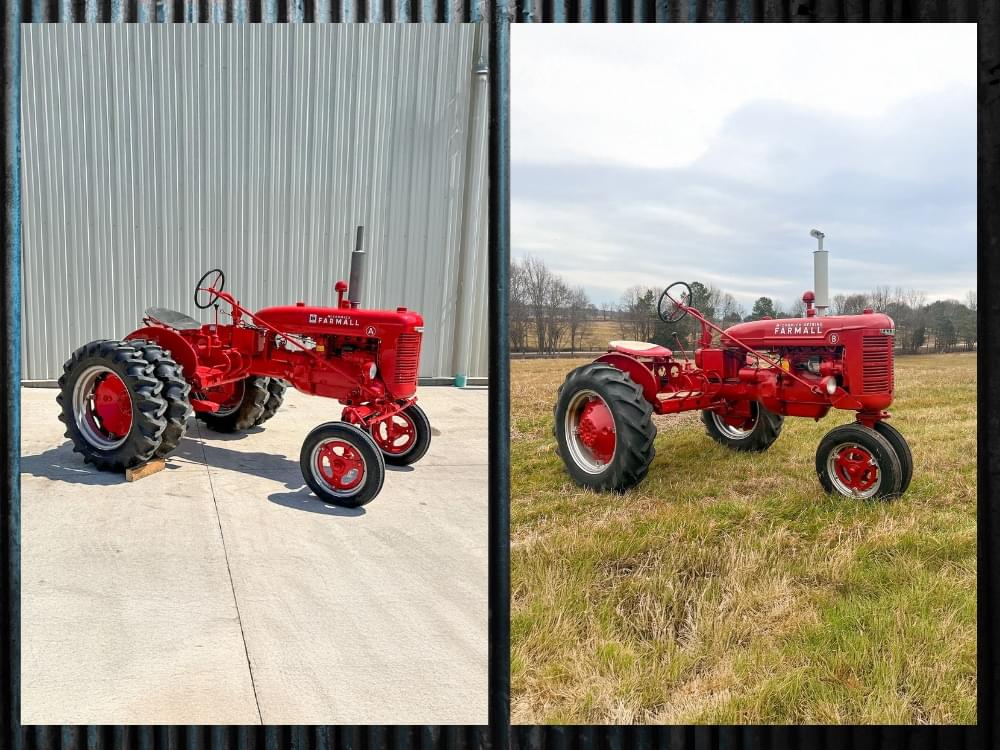
Introduced in 1948, the Farmall C was Harvester’s answer to a growing gap in the lineup—something a little bigger than the A and B, but not quite stepping on the H’s toes. The A and B were essentially twins: both aimed at replacing the horse for small-acreage farmers. The A had an offset engine and wide front end; the B kept a narrow front but shifted the seat off-center. Same engine under the hood—a 113-cubic-inch four-cylinder making just over 18 horsepower on the belt and 16 at the drawbar. Between 1939 and 1947, they sold plenty, especially the A, which found a home with veggie and tobacco growers. In ’47, Harvester rolled out the Super A with the same basic powerplant but added the new Touch Control hydraulic system.
Still, that left a hole—something with a little more muscle that wouldn’t price farmers into H territory. Enter the Farmall C. Built to improve upon the B, the C featured a true center seating position, a longer wheelbase, and weighed in about 450 pounds heavier. Power bumped up to just over 21 horses on the belt and 18 at the drawbar, giving small row-crop operators the boost they needed without overdoing it. For farmers who were behind the times, it was a solid case for putting the horses to pasture. In just three years, Harvester cranked out nearly 80,000 of them.
So, while the C didn’t get much of a spotlight, like a good middle child, it quietly carried its weight.
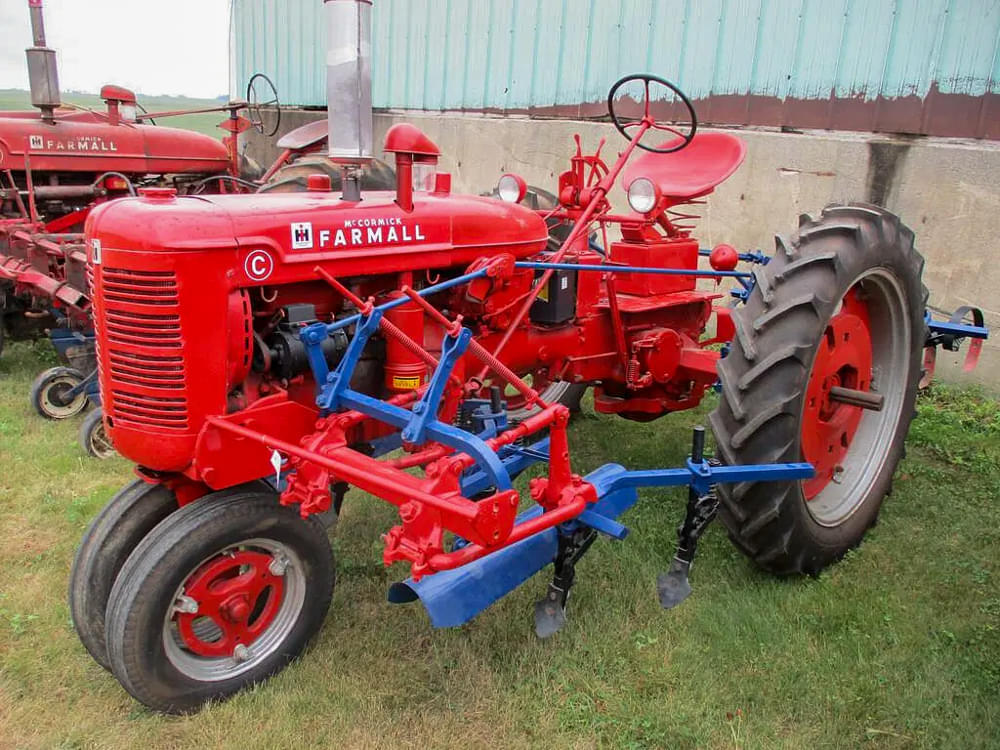
Were they all white?
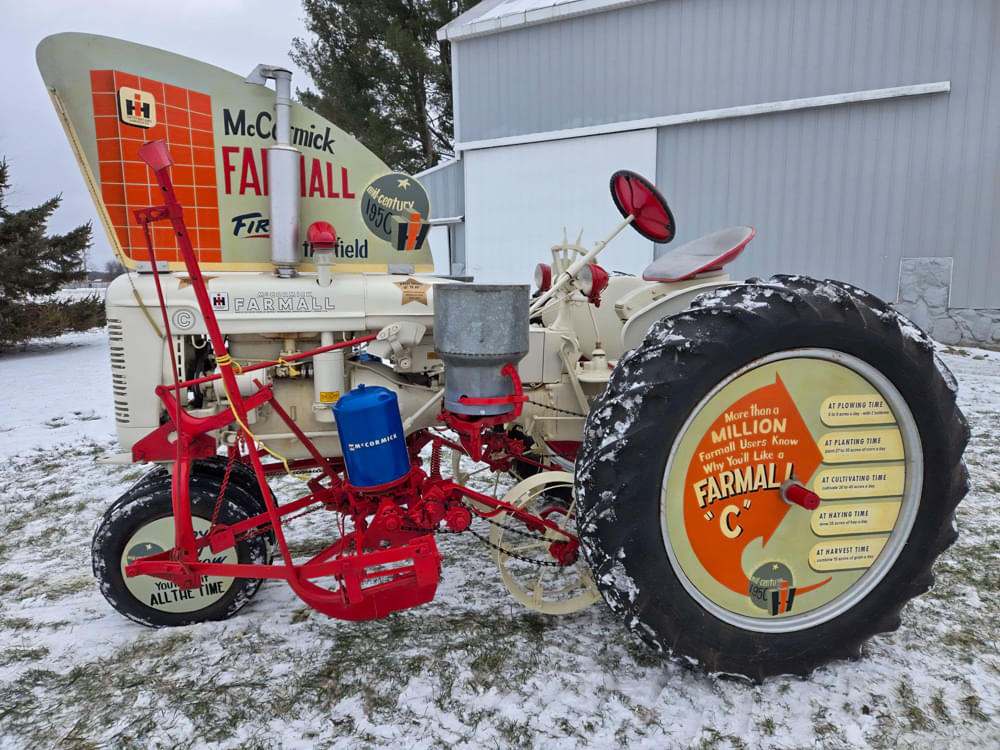
Nope, they weren’t all painted white. What you’re looking at is a limited run of tractors tied to a special advertising push in 1950. The details of that campaign—especially the nitty-gritty tactical stuff—weren’t well documented, but here’s what we do know. For the first three months of that year, the Louisville Harvester Works painted a fair number of Cubs, Super As, and Cs in white. No one’s exactly sure how they decided which units got the special treatment. And to make it trickier, they didn’t track serial numbers by paint color—so there’s no definitive list of how many white ones left the factory.
What we do have is a serial number range. If your Farmall C falls between #47010 and #54410, it was built in the first quarter of 1950—and there’s a better-than-zero chance it was originally white. Just one more reason the C keeps us guessing. Typical middle child.
Why were they white?
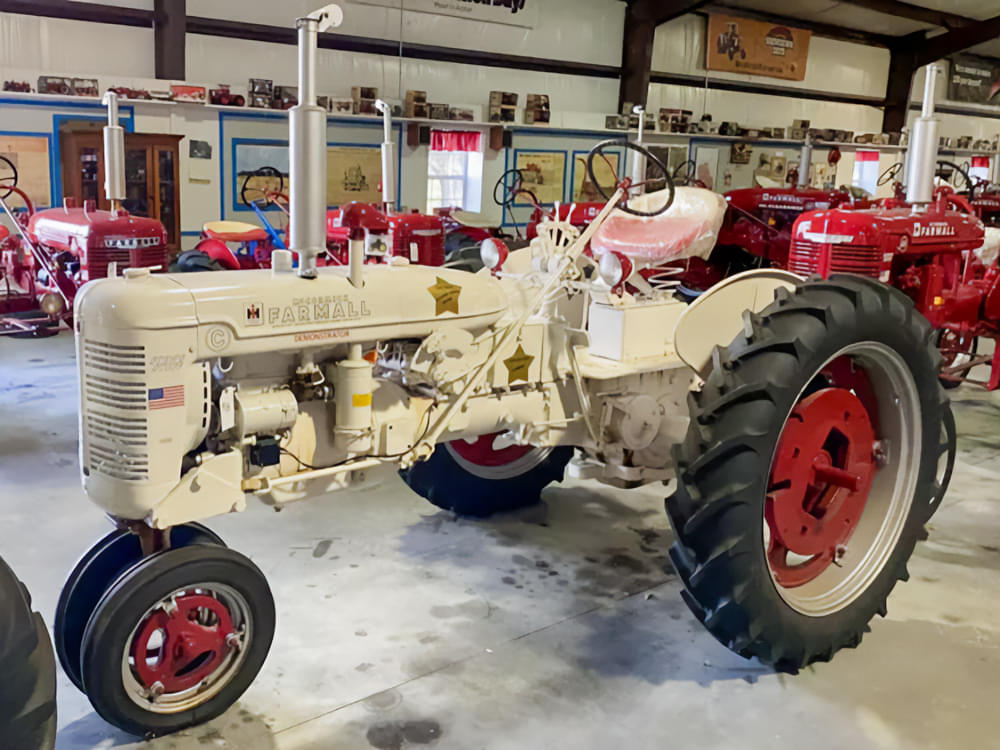
I’m sure most of you remember the gold demonstrators that IH sent to dealers in 1970—collector favorites and easily some of the most cloned red tractors out there. The white demonstrators were the predecessor to that. The idea was simple: white stood out in the field, making it easier for dealers to catch a farmer’s eye during a demonstration. From what I understand, every dealer was encouraged to take one of each model.
Now, there was a catch. Harvester instructed dealers to repaint the tractors red when they were sold—unless the customer asked to keep it white. So, most of those machines went home looking like every other red Farmall of the era. (Interestingly, IH gave the same paint-it-red-after-sale instruction with the gold demonstrators two decades later.)
That policy, while practical at the time, makes it tough today to tell who’s got a real demonstrator. Unless you’ve got photos or solid proof, there’s no way to know for sure. A few white ones slipped through untouched—either by customer request or dealer oversight—but they’re rare. Still, if you’re investigating a C that might’ve worn white, check behind the rear light mounting strap or under the hood up front. A little leftover paint in those hidden spots might be good clues.
Was there anything different about a demonstrator?
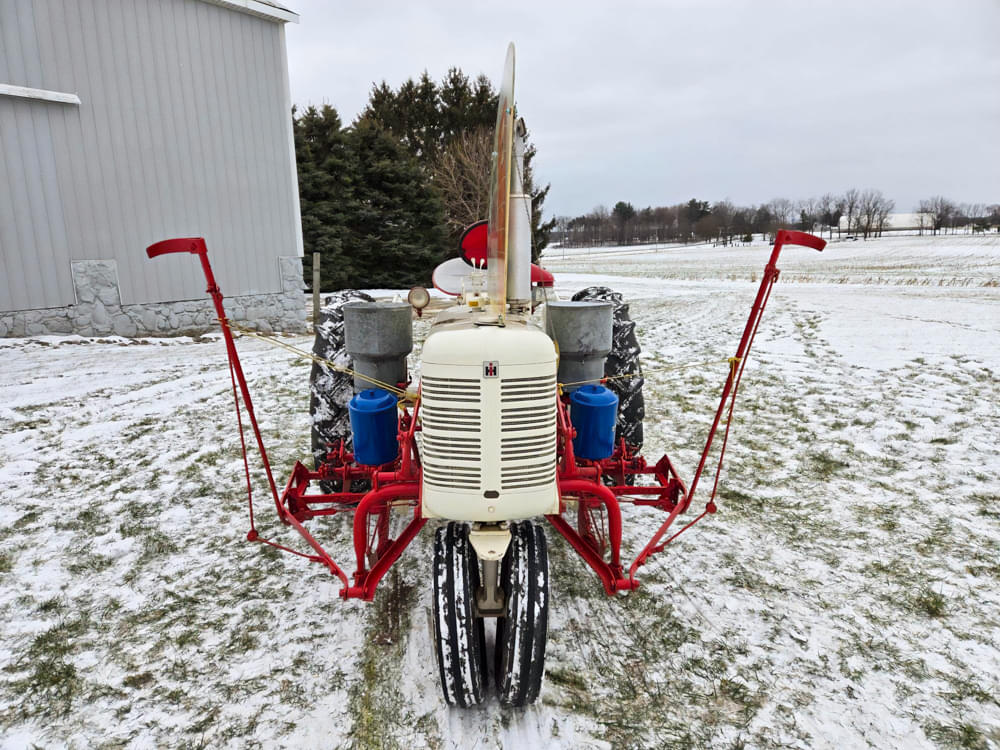
Other than the white paint, there were zero differences between a demonstrator and a plain-jane Farmall C. The motor still put out the same power, the performance was no different. It’d be neat if there was, but like the gold demonstrators of twenty years later, no differences other than the paint. They’re the same tractor, just a little harder to keep clean.
So what’s a Farmall C worth today?
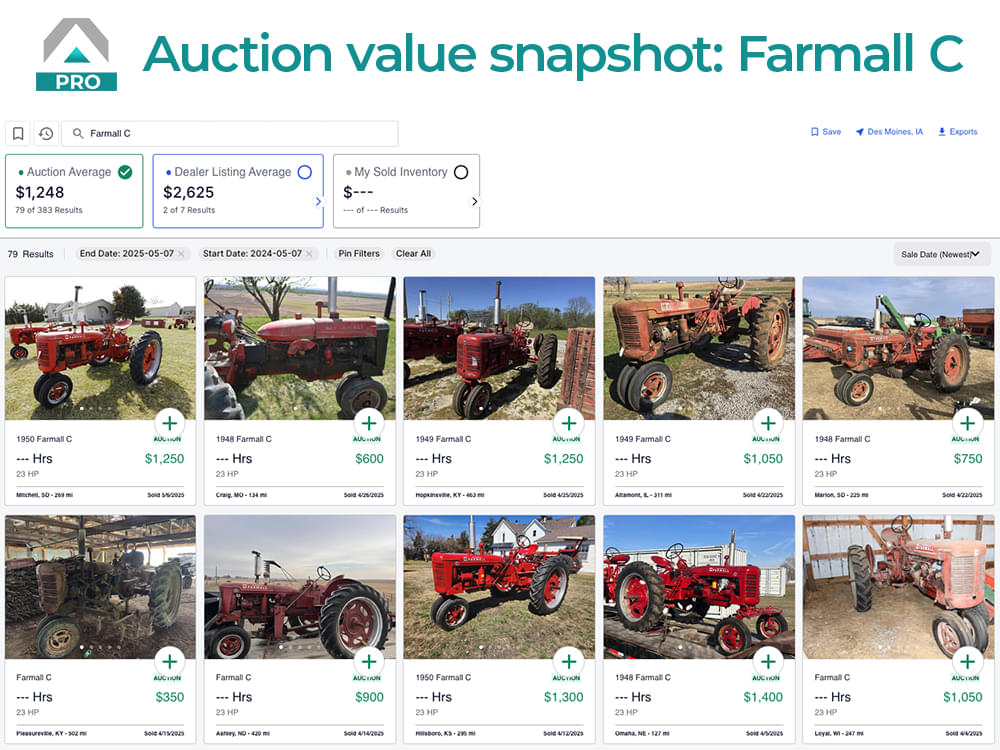
Glad you asked. Over the past year, we’ve seen 79 tractors change hands at auction at an average price of $1248. Now, that said, there were a few verified white demonstrators that traded higher than the average, so this number is probably slightly skewed. So, if we take those out of the list, the average turns out to be $1101. So if you’re keeping score at home, somewhere between $1100-1200 is pretty fair, in my opinion. Nicer ones bring a little more, as you’d expect.
What’s a demonstrator worth?
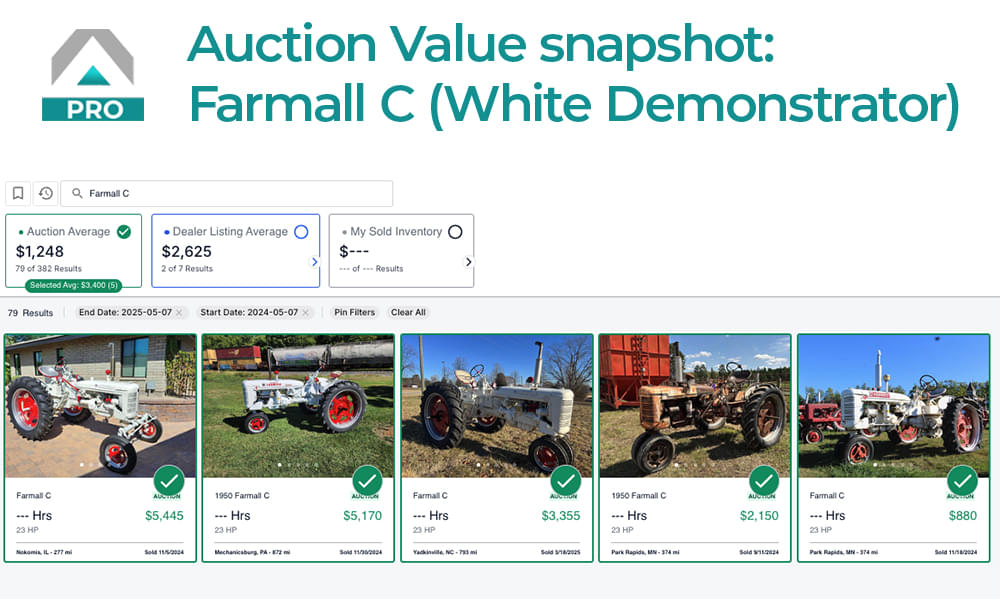
If you do the math on the five white demonstrators that changed hands over the past year, it averages out to $3400. So, they do tend to trade for a bit more money at auction. Obviously most of these have undergone some degree of restoration (or at least a repaint), and that reflects in the price. Personally I think my favorite is the one still in its original work clothes, but that’s just me. Different strokes for different folks.
So that brings us to this one with all the dealer doo-dads and the corn planter setup selling in Michigan soon.
The one you can buy on May 17, 2025
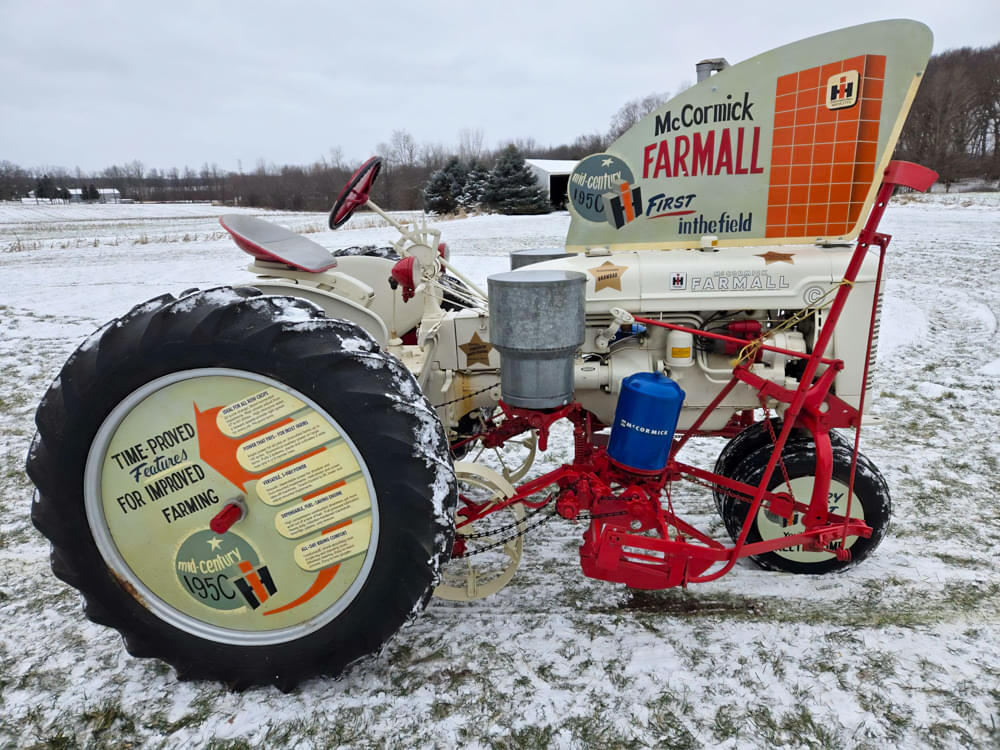
This tractor comes from a beautifully kept IH collection that belonged to a gentleman named Loren Peterson. From what I gather, Loren was a lifelong dairy farmer and a die-hard red tractor guy through and through. After he retired from milking cows, he split his time between enjoying his tractors and spoiling the barn cats. When I read that detail in his obituary, I thought, “Yep, this is a guy I would’ve gotten along with just fine.” I’ve got a soft spot for cats—barn or otherwise—and that line just stuck with me.
When I first saw Art Smith’s auction listing on Tractor Zoom, the location jumped out at me. Sparta, Michigan—right in my old stompin’ grounds. I grew up about 45 minutes away and spent plenty of time there with family. The second thing that caught my eye? The quality of the tractors. This is a nice collection.
Still, rather than rely solely on the photos, I decided to phone a friend back home. He confirmed what I suspected. “Ryan,” he said, “my dad knew Loren well. He was very particular when it came to those tractors. They’re just as nice as they look in the photos. I’ve seen them myself.”
The Farmall C Demonstrator
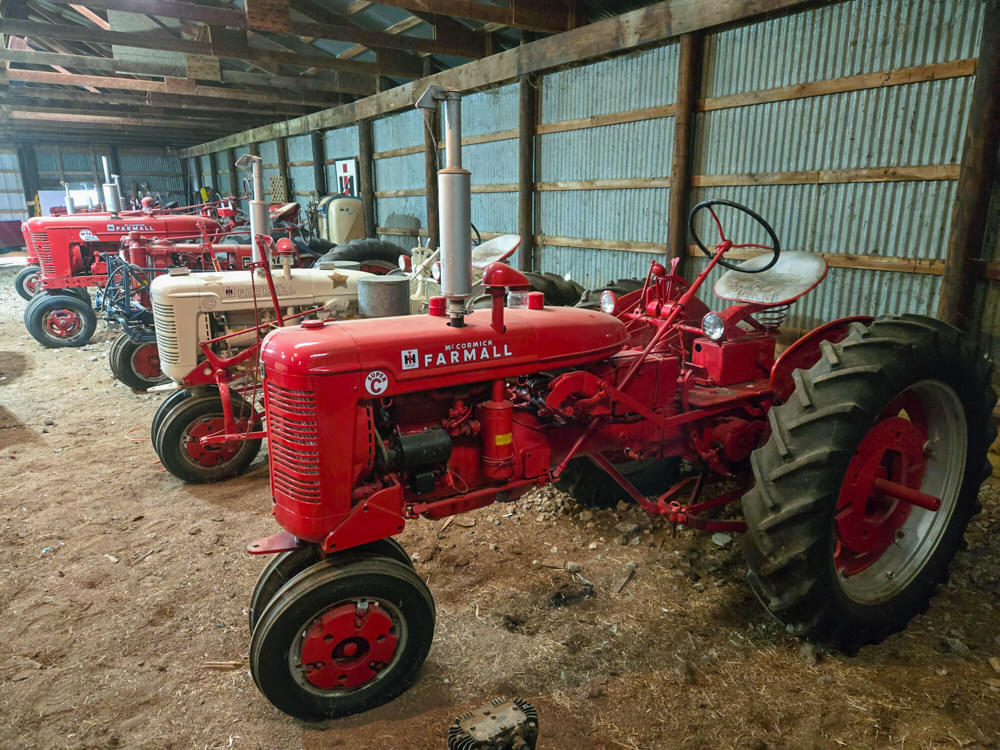
What sets this one apart isn’t just the paint—it’s the signage. From what I can tell, this is a full reproduction set of the original cardboard signs that would’ve shipped with the tractor. That kind of thing is nearly impossible to find. Cardboard isn’t meant to hold up for 75 years.
But Loren didn’t let that stop him. He did the digging and made it happen. There’s talk that two complete sets were floating around Michigan at one point—no idea where the other one went—but this one is a showstopper (for me, at any rate). Historical pieces like this deserve to be preserved, and I hope the final price reflects that.
So what’ll it bring? I really don’t know. It’s a one of kind package deal and I highly doubt that there’s another one like it. If I could make it up there for the sale, I’d do it in a heartbeat. However, there’s a honey-do list that’s been neglected for too long, so it’s probably in my best interest to stick around home. I’ll definitely be paying attention online, though, and I hope you will be too!
Here’s the link to the Tractor Zoom listings for this sale.




















